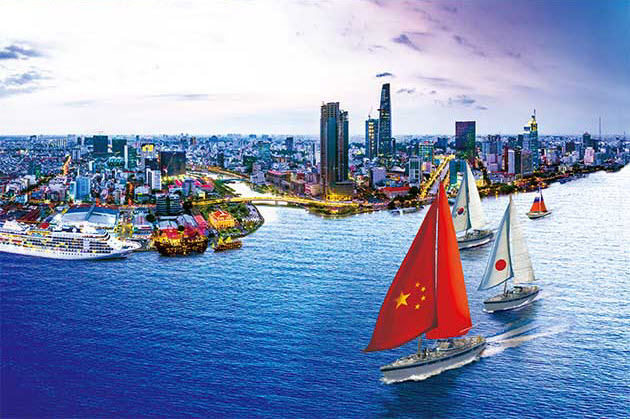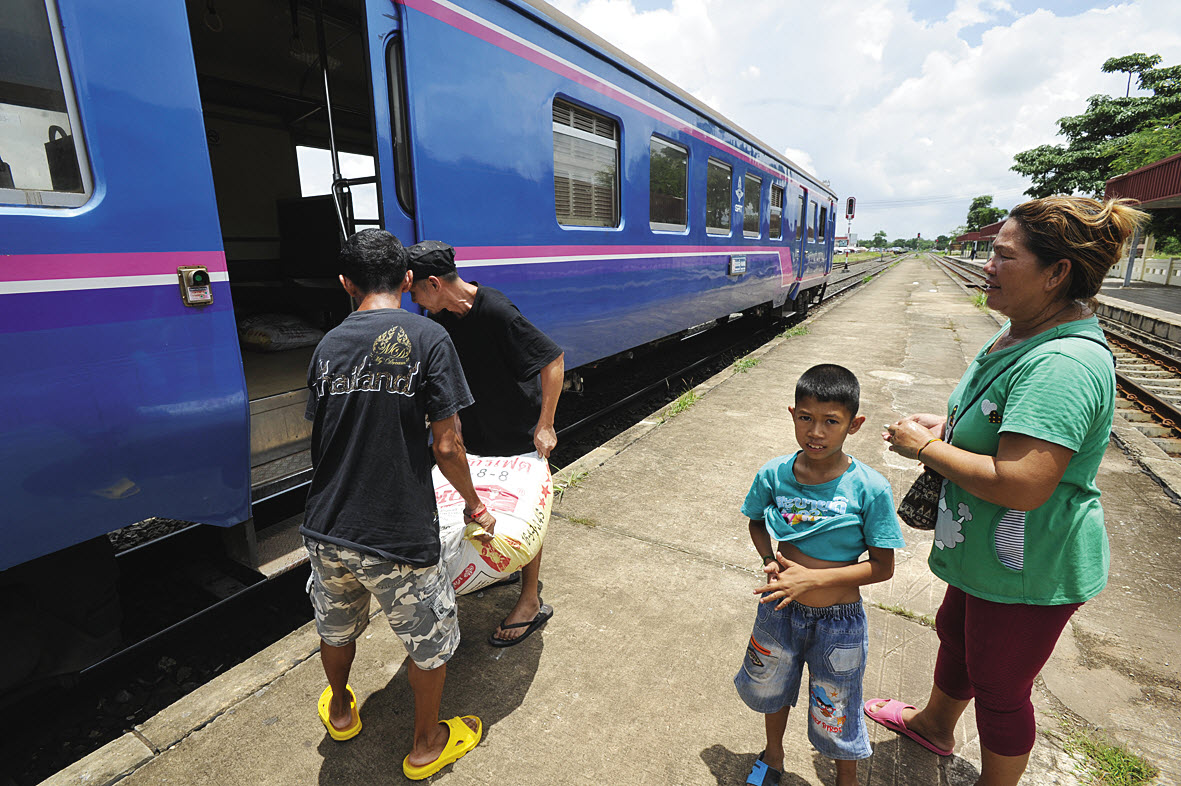A Micro-look at an ASEAN Border
China’s Ubiquitous Shadow

Source:Shutterstock
Though Japan, South Korea and China are battling it out for overall economic influence in the Greater Mekong region, Beijing is on the way to winning the fight at the microeconomic level, as these three stories from the Thailand-Laos border show.
Views
China’s Ubiquitous Shadow
By Elaine HuangFrom CommonWealth Magazine (vol. 627 )
Udon Thani, Thailand:
World War II Base Turned Border Trade Hub
Udon Thani in northeastern Thailand was home to an American Air Force base in World War II. Today, it’s another kind of air base, receiving a constant stream of flights from Bangkok carrying European and American tourists.
The Bobae Market on the city’s outskirts is known as the “Indo-China Market” to locals, selling mostly daily commodities, clothes and consumer electronics products either shipped in by land or by sea from China.
Lou Xuanbin, a 32-year-old vendor at the market with his own curtain shop, is busy doing his accounts.
In the store are around a dozen Thais busy sewing curtains for the boss, trying to build inventory for the many people from Laos who cross the border every other Friday to buy goods at the market. So many come that the roads leading to the market are all congested, but it also represents a good opportunity to make money.
Lou and the owners of the five curtain shops next to his first moved from their native Zhejiang and Hunan provinces to Laos 10 years ago to do business before ending up in thriving Udon Thani because of the opportunity there.
“There are more than 100 shops here, and over half of them are owned by Chinese,” Lou says.
Having opened this shop with local Thai partners, Lou orders merchandise from Yiwu in Zhejiang and then has it shipped by ocean freight to Bangkok and trucked up to Udon Thani.
“Even the trucking company we use is run by Chinese. It’s very convenient,” Lou says. Not surprisingly, the big billboard on the market’s exterior wall is draped with an eye-catching display for Chinese logistics companies: China Highwin Limited, TaoBao Cargo and Alibaba Thailand.
The shop earns about 200,000 renminbi (US$30,000 ) a month, an amount Lou says “is enough to get by on.”
A half hour drive from Udon Thani is Nong Khai, another hub for Thai-Lao border trade. Every morning, hordes of travelers and business people shuttle between Thailand and Laos across the Mekong River over the Friendship Bridge.
Nong Khai, Thailand:
A Small Train Station on the Thailand-Laos Border
An invisible Chinese shadow hangs over the Nong Khai train station in northeastern Thailand.
Inside this rustic train station is a passport control checkpoint that handles people taking one of two trains a day across the border to Vientiane, one in the morning and one in mid-afternoon.
“This train ride may only take 15 minutes, but it’s a microcosm of the China-Thailand Railway project,” says Tai Wan-ping, a professor in Cheng Shiu University’s Department of International Business, who has taken the train before.
People in Nong Khai are all aware of the Thai government’s plan for the China-Thai Railway line.
The planned railway has been beset by delays and opposition, but on July 11, the Thai Cabinet approved starting construction on the first phase of the high-speed rail line in September. The first phase will span 250 kilometers from Bangkok and the province of Nakorn Ratchasima, nearly halfway to the Thailand-Laos border, and is expected to take four years. Should Thailand’s National Assembly approve the project, it will be tendered out in phases, with the second phase to reach Nong Khai.
“I believe it will connect to China,” 61-year-old Nong Khai native named “Saman” told a CommonWealth reporter. Dressed in a blue uniform with a neatly combed head of hair, he has worked at the Nong Khai railway station for 40 years and is full of anticipation for the new line.
“I want to take the train to visit China. I’d really like to see Beijing,” he says.
Laos:
China’s Major Site for Striking in ASEAN
Across the Thai border in Laos, which shares a border with China, the capital Vientiane has been turned into a major Chinese construction site.
Driving along the city’s main road, route 13, the most eye-catching building sits on a direct line from Vientiane’s best-known landmark, the Patuxay Monument, and is known to local residents as Latsavong Plaza.
“It’s being built by the Chinese. It will be 33 stories, the highest building here,” says a Laotian taxi driver pointing ahead to the site where construction has been in progress for two years.

On the exterior wall of the construction site is a sign identifying the project’s owner as “Sino Great Wall Co.” It had been known as “Shenzhen Zhongguan Textile Printing and Dyeing Co.” until 2015 when it restructured itself into a construction and engineering company that bids for projects in Southeast Asia and the Middle East. In 2015, it won the right to develop government land, which is the site of the Latsavong Plaza complex project.
The advertising banner outside the project blared out its credentials as “a leading private company in One Belt, One Road.” It also trumpeted that “the Pan-Asia Railway is being built, and the China-ASEAN free trade zone was formed in 2015, becoming one of the three biggest free trade zones in the world with 1.9 billion people and a GDP of US$600 million (sic).”
The banner’s rhetoric was perfectly aligned with China’s “Go Global” strategy.
Driving into downtown Vientiane, one notices the Vientiane Center, a new shopping mall that was built by the Yunnan Construction Group and completed last year. On an adjacent construction site where it is putting up an office building, even the crane being used was transported in from China’s Zhejiang BaDa Construction Group.
“Laos is simply a major Chinese construction site,” an employee with a foreign financial institution posted in Laos for more than a year cannot help but say.
He had just driven along the beautiful Mekong River that borders Vientiane to the south and west, and passed by the ideally located Landmark Mekong Riverside Hotel, which not surprisingly was also built by a Chinese company.
Vientiane has become the epitome of China’s rapid attack on ASEAN.
Translated from the Chinese by Luke Sabatier






